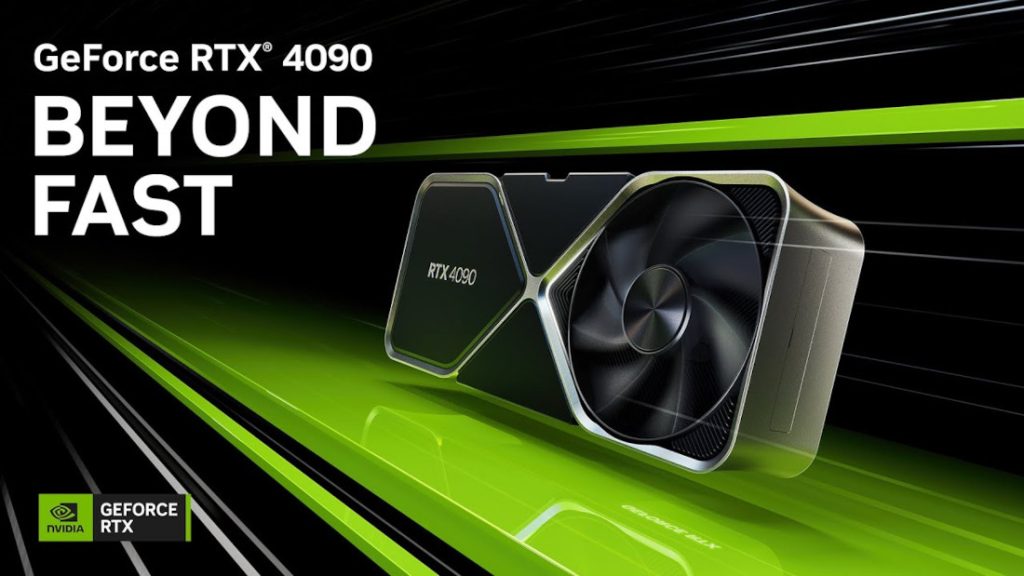
NVIDIA at its GTC event introduced the most expected GeForce RTX 40 Series of GPUs. The flagship RTX 4090 promises up to 4x the performance of its predecessor. It also introduced the RTX 4080 alongside. These use 4nm process from TSMC, are based on new Ada Lovelace Architecture and feature DLSS 3.
Ada Lovelace Architecture
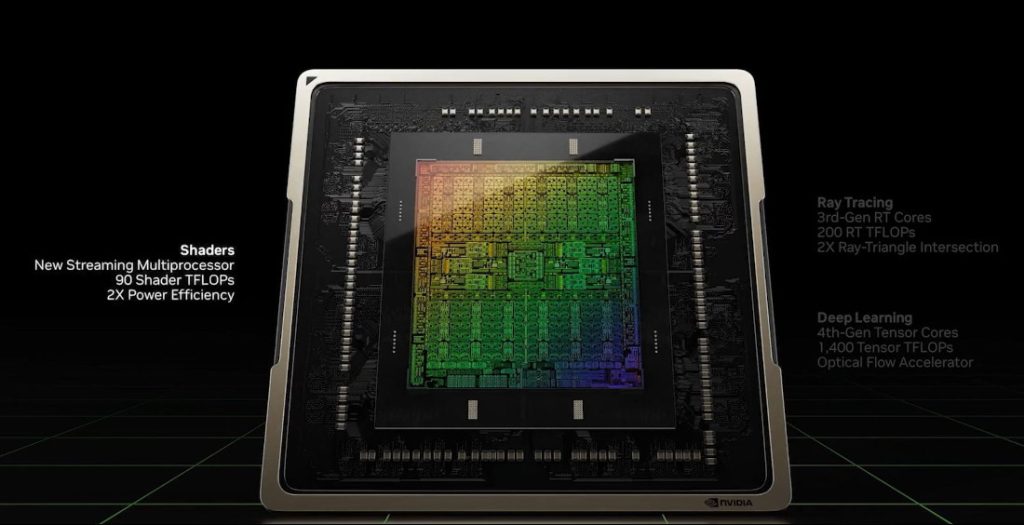
The new Ada Lovelace Architecture features Third-Generation RT Cores, offering up to 2X the throughput over the previous generation. This also speeds up the rendering of ray-traced motion blur for faster results with greater visual accuracy.
The new fourth-generation Tensor Cores accelerate more data types and support Fine-Grained Structured Sparsity to deliver more than 2X throughput for tensor matrix operations compared to the previous generation.
The Ada-based CUDA cores bring double-speed processing for single-precision floating point (FP32) operations over the previous generation GPUs. This provides significant performance gains for graphics workflows like 3D model development and compute workflows like desktop simulation for computer-aided engineering (CAE).
NVIDIA DLSS 3
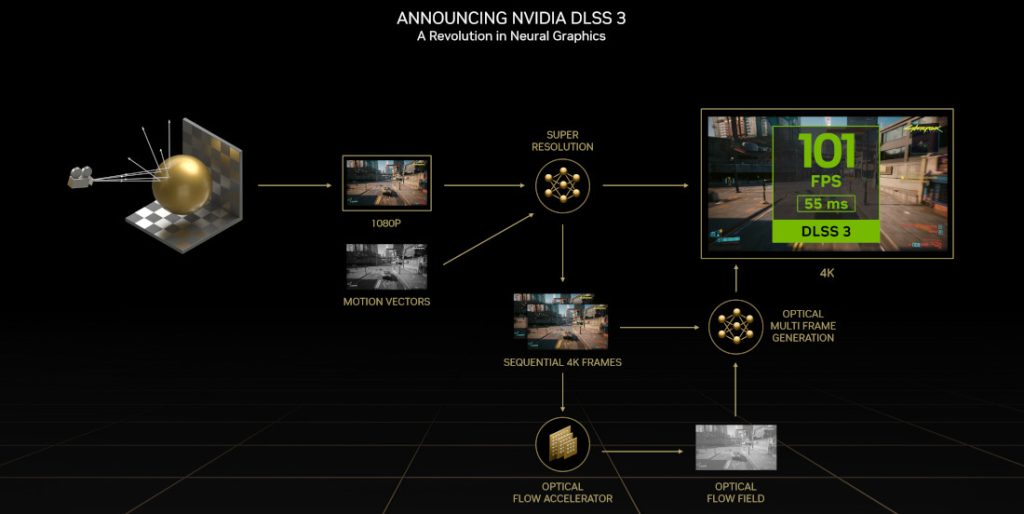
NVIDIA DLSS 3, the next revolution in neural graphics combines DLSS Super Resolution, all-new DLSS Frame Generation, and NVIDIA Reflex, running on the new hardware capabilities of GeForce RTX 40 Series GPUs, DLSS 3 multiplies performance by up to 4X over brute-force rendering.
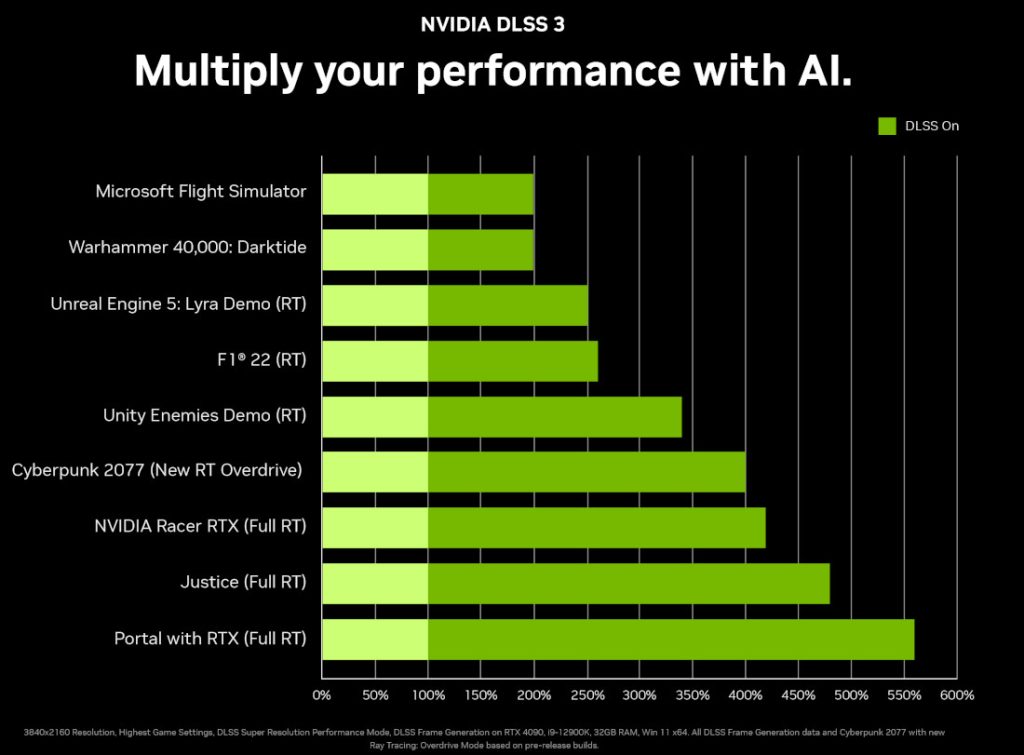
NVIDIA said that DLSS 3 is already being rapidly adopted by the ecosystem, with over 35 games and applications integrating the technology, and the first of which will launch in October. When compared to native, DLSS 3 can reduce latency by up to 2X, said the company.
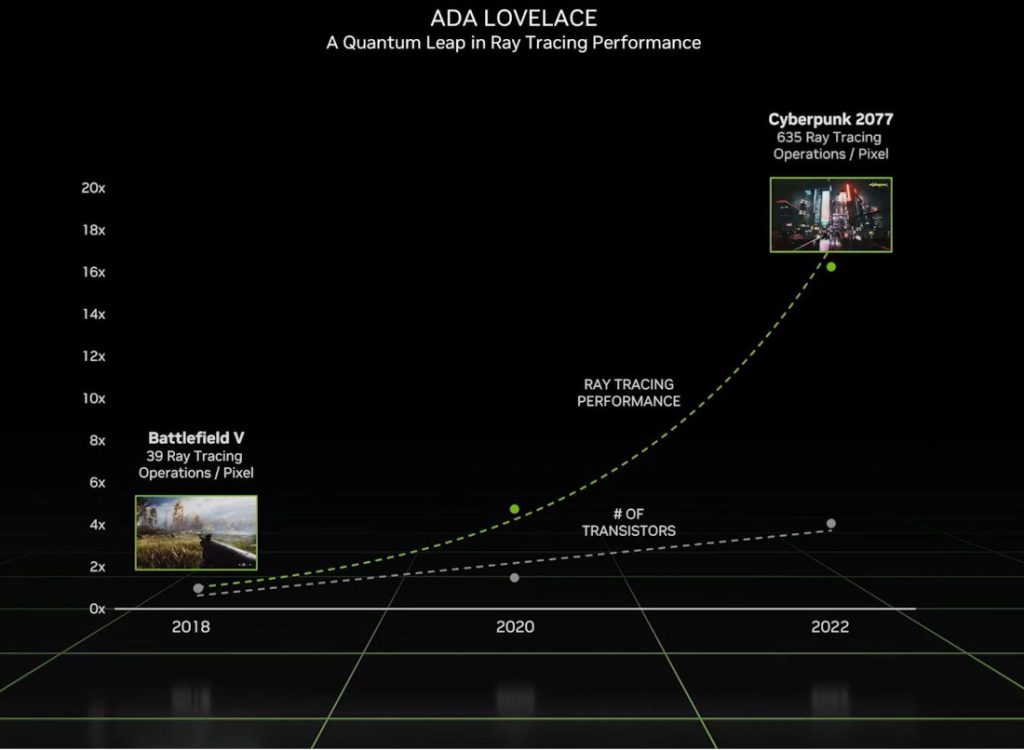
Modern ray-traced games like Cyberpunk 2077 run over 600 ray-tracing calculations for each pixel just to determine lighting — a 16x increase from the first ray-traced games like Battlefield V introduced four years ago, said the company.
RTX 40 Series GPUs feature a range of new technological innovations, including:
- Streaming multiprocessors with up to 83 teraflops of shader power — 2x over the previous generation.
- Third-generation RT Cores with up to 191 effective ray-tracing teraflops — 2.8x over the previous generation.
- Fourth-generation Tensor Cores with up to 1.32 Tensor petaflops — 5x over the previous generation using FP8 acceleration.
- Shader Execution Reordering (SER) that improves execution efficiency by rescheduling shading workloads on the fly to better utilize the GPU’s resources. As significant an innovation as out-of-order execution was for CPUs, SER improves ray-tracing performance up to 3x and in-game frame rates by up to 25%.
- Ada Optical Flow Accelerator with 2x faster performance allows DLSS 3 to predict movement in a scene, enabling the neural network to boost frame rates while maintaining image quality.
- Architectural improvements tightly coupled with custom TSMC 4N process technology results in an up to 2x leap in power efficiency.
- Dual NVIDIA Encoders (NVENC) cut export times by up to half and feature AV1 support. The NVENC AV1 encode is being adopted by OBS, Blackmagic Design DaVinci Resolve, Discord and more.
GeForce RTX 4090 and 4080
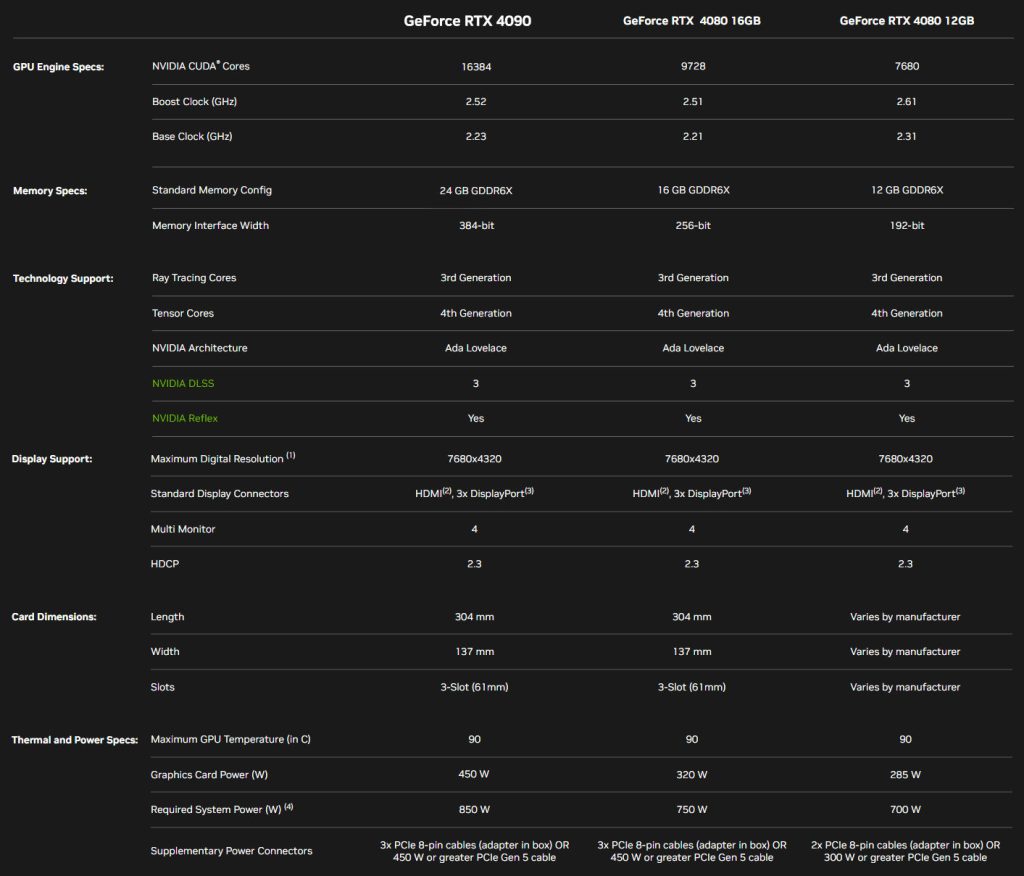
The RTX 4090 with DLSS 3 promises up to 4x faster performance compared to last generation’s RTX 3090 Ti with DLSS 2. It is also up to 2x faster in today’s games while maintaining the same 450W power consumption, said the company.
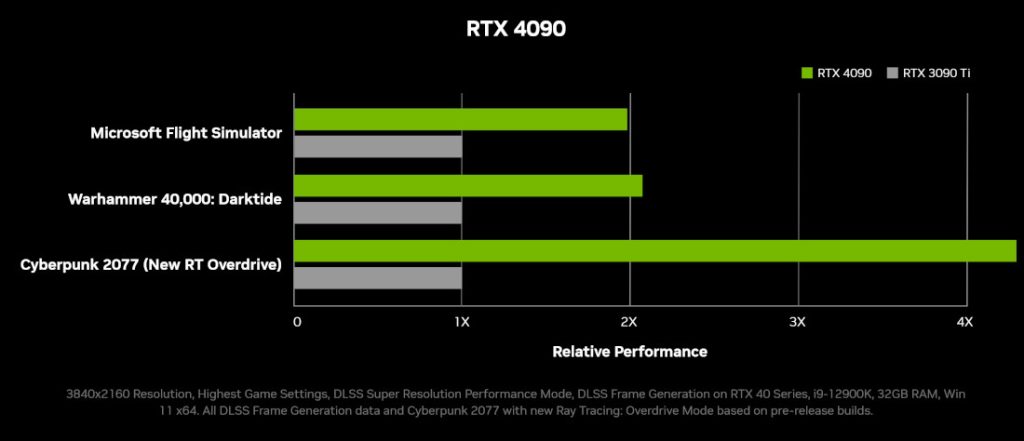
It features 76 billion transistors, 16,384 CUDA cores and 24GB of high-speed Micron GDDR6X memory, and NVIDIA said that it consistently delivers over 100 frames per second at 4K-resolution gaming.
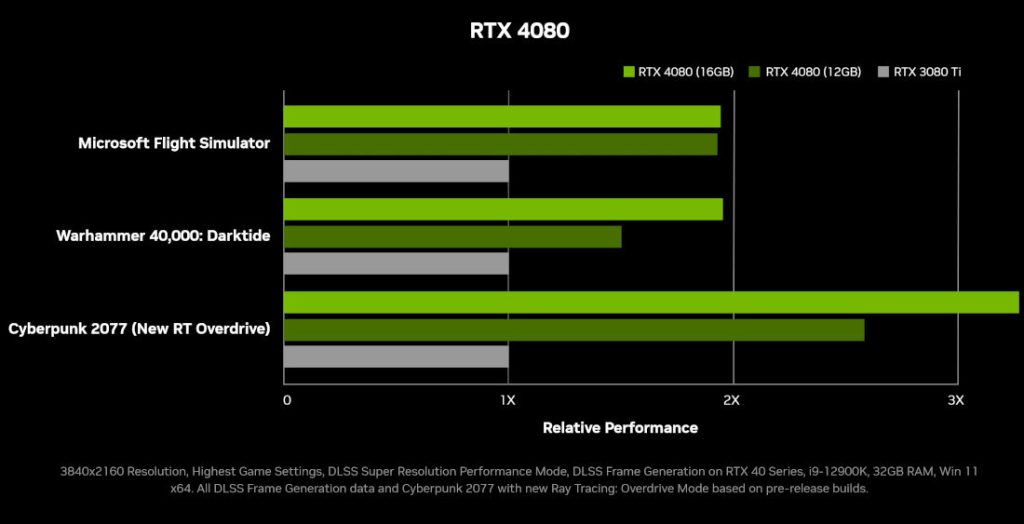
The RTX 4080 comes in 16GB with 9,728 CUDA cores and 16GB of high-speed Micron GDDR6X memory, and with DLSS 3 it promises 2x faster performance in games compared to GeForce RTX 3080 Ti and will be more powerful than the GeForce RTX 3090 Ti at lower power.
The RTX 4080 12GB has 7,680 CUDA cores and 12GB of Micron GDDR6X memory, and with DLSS 3 it is faster than the RTX 3090 Ti, said the company.
Pricing and availability
The NVIDIA GeForce RTX 4090 is priced starting at $1,599 (Rs. 1,27,550 approx.) and will roll out from October 12th.
The NVIDIA GeForce RTX 4080 16GB and 12GB models are priced starting at $1,199 (Rs. 95,640 approx.) and $899 (Rs. 71,710 approx.), respectively, and will roll out from November.
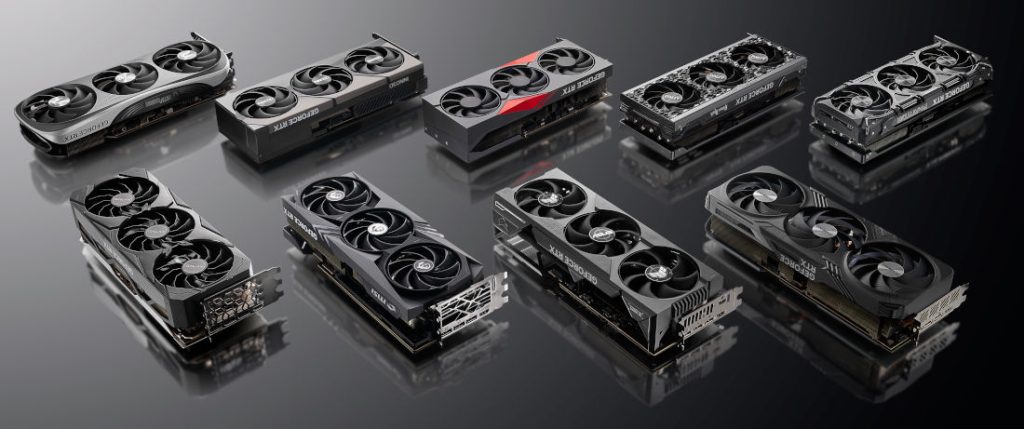
RTX 4090 and RTX 4080 (16GB) limited Founders Editions will also be available. Third-party OEMs such as ASUS, Colorful, Gainward, Galaxy, GIGABYTE, Innovision 3D, MSI, Palit, PNY and Zotac will offer the cards. A few days back, EVGA announced that it is parting ways from NVIDIA, so there won’t be any cards from the company.
GeForce RTX 40 Series GPUs will be available in gaming systems built by Acer, Alienware, ASUS, Dell, HP, Lenovo and MSI.
